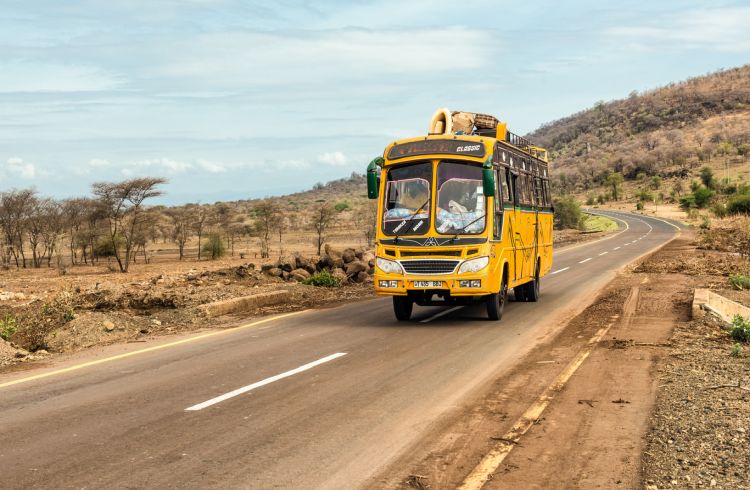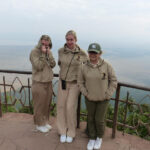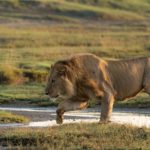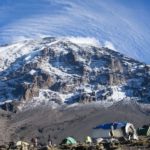With a unique blend of vibrant culture and breathtaking landscapes, navigating Tanzania offers an experience unlike any other. In fact, Tanzania is home to over 120 ethnic groups, each with its own language, making transport options a remarkable facet of your journey here. But how do you traverse this diverse and vast country efficiently?
Understanding your options is crucial. From the efficiency of the railways dating back to colonial times to the convenience provided by the growing number of domestic flights, Tanzania’s transport system is evolving. Additionally, the expansive network of bus and ferry services ensures that even the more remote areas remain accessible, significantly enhancing mobility within the country.
- Consider using buses for long distances between major cities, which are affordable and frequent.
- Opt for domestic flights with airlines like Precision Air to save travel time when visiting remote locations like the Serengeti.
- Experience local culture on shorter routes by taking dala-dalas, Tanzania’s minibuses.
- Explore scenic waterways via ferries, especially around Lake Victoria and the coast.
- Use railways such as TAZARA or TRC for comfortable and scenic inland journeys.
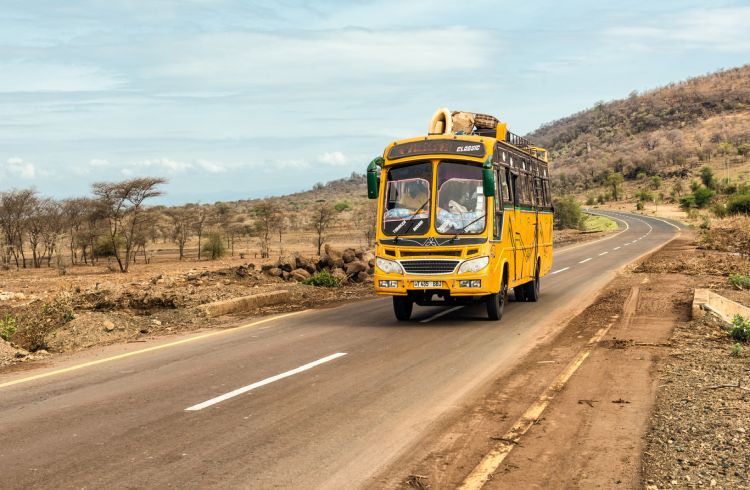
How to Get Around Tanzania: Transport Options Explained
Traveling through Tanzania presents various transport choices. Buses are a popular and affordable option for many locals and tourists. They connect major cities like Dar es Salaam, Arusha, and Dodoma. For remote areas, dala-dalas (small minibuses) are common. They might be crowded, but they offer an authentic local experience.
Domestic flights are ideal for reaching far-flung destinations quickly. With airlines such as Precision Air and Coastal Aviation, you can fly to islands like Zanzibar or distant parks like Serengeti National Park. These flights can be a bit pricey compared to buses, but they save time. Air travel is especially convenient for travelers on tight schedules.
Additionally, rail transport offers a scenic and comfortable journey. The Tanzania-Zambia Railway Authority (TAZARA) line is notable for its scenic views, linking Dar es Salaam with Kapiri Mposhi in Zambia. While the ride might be slower than other transport means, it provides an opportunity to see the countryside. Train trips often include overnight options, making them restful for long journeys.
Water transport is another way to explore Tanzania’s beauty. Ferries and boats primarily work around places like Lake Victoria and the coastal areas. For instance, a ferry ride from Dar es Salaam to Zanzibar is both scenic and enjoyable. This mode of transport is perfect for those who want to experience Tanzania’s stunning aquatic landscapes.
Step 1: Exploring Tanzania’s Common Road Transport
In Tanzania, buses are the most common road transport. These intercity buses connect major cities and towns. They are affordable and reliable. Most buses have fixed schedules, making it easy to plan. Travelers often use them for long-distance trips.
An alternative on the roads is the dala-dala. These minibuses are frequent in urban areas. They are cheaper but can be crowded. Dala-dalas have flexible routes. This makes them suitable for short distances.
For more comfort and privacy, taxis are widely available. They are usually found in larger cities like Dar es Salaam and Arusha. Taxis allow you to travel directly. Negotiating the fare beforehand is a good practice. This can prevent misunderstandings.
Another option is renting a car. Several agencies offer cars for hire. Renting provides freedom to explore at your own pace. However, road conditions vary. Always check the state of roads when planning your route.
Step 2: Utilizing Air Travel for Efficiency
Air travel in Tanzania is efficient for reaching distant locations quickly. Airlines like Precision Air and Coastal Aviation connect major cities and tourist spots. For example, regular flights operate between Dar es Salaam and Zanzibar. Flights also link Arusha with the Serengeti. These connections save significant travel time.
Small aircraft are common for flights to remote areas. These planes reach national parks and smaller towns. Safari companies often charter flights. This makes exploring wildlife-rich regions easier. These flights offer stunning aerial views.
Booking flights can be done online. Many airlines provide easy-to-use booking platforms. It’s advisable to book in advance, especially in peak seasons. This ensures seat availability. It can also help in getting better deals.
Airports in Tanzania range from large international hubs to small airstrips. The main international airport is Julius Nyerere International Airport in Dar es Salaam. Kilimanjaro International Airport serves Arusha. Smaller airstrips are scattered across the country. This network supports diverse travel needs.
Step 3: Navigating Waterways and Railways
Tanzania’s vast network of waterways offers scenic and practical transport options. Ferries are commonly used, especially around coastal areas and large lakes. The ferry from Dar es Salaam to Zanzibar is a popular route for tourists. It provides a scenic and enjoyable journey. Comfortable passenger services ensure a pleasant experience.
Additionally, Lake Victoria has several ferry routes connecting different towns. Ferries here are vital for daily transport. These routes offer regular schedules. They are essential for both locals and travelers. This mode of travel adds to the adventure of exploring Tanzania.
Tanzania’s railways serve as another efficient means of travel. The Tanzania-Zambia Railway Authority (TAZARA) runs between Dar es Salaam and Kapiri Mposhi in Zambia. This line offers impressive views of the landscape. A relaxed travel pace allows you to enjoy the countryside. Overnight journeys provide resting opportunities.
The Tanzania Railways Corporation (TRC) operates within the country. This railway connects key cities and regions. Schedules are fixed, providing reliable services. Travelling by train can be cost-effective. It’s a comfortable way to explore the country.
Travel tables can be handy. Here’s a brief overview:
| Mode of Transport | Main Route | Features |
|---|---|---|
| Ferry | Dar es Salaam to Zanzibar | Scenic, Comfortable |
| TAZARA Train | Dar es Salaam to Kapiri Mposhi | Scenic, Overnight |
| TRC Train | Various City Connections | Reliable, Cost-effective |
Key Considerations When Choosing Transport in Tanzania
When deciding on transport in Tanzania, safety is a top priority. Always check the safety record of the airline or bus company. For road travel, ensure the vehicle is in good condition. Avoid traveling at night, as roads can be less safe. Safety should never be compromised.
Cost is another important factor. Comparing prices across different transport options can save money. Buses are usually more affordable than flights. Ferries and trains also offer budget-friendly options. Balancing cost with convenience is key.
Travel time can greatly affect your experience. Flights are the quickest way to cover long distances. Trains and buses take longer but can be more scenic and restful. Plan your itinerary accordingly. More travel time means less time spent at your destination.
Comfort and convenience vary between transport modes. Some buses and trains offer luxury services. Basic services are also available at lower costs. For those who need more space or amenities, it’s worth paying extra. Evaluate your comfort needs before booking.
Environmental impact is a growing concern. Planes and cars have a higher carbon footprint compared to trains and buses. Choose more sustainable transport when possible. It’s a small step toward responsible travel. Every choice contributes to the environment.
Travel Tips from Rolux Safaris for a Smooth Journey
Booking in advance can save both time and money. Whether you’re opting for a safari, flight, or bus ride, early reservations often come with discounts. This also ensures you secure your preferred travel dates. Last-minute bookings can be more expensive and less flexible. Planning ahead makes your trip smoother.
Pack appropriately for your journey to Tanzania. Lightweight clothing is ideal for the warm climate. Include a good pair of walking shoes, especially if you plan on going on safaris. Don’t forget essentials like sunscreen, insect repellent, and a hat. Proper packing enhances your comfort during the trip.
Staying connected is vital while traveling. Local SIM cards are affordable and easy to get. Major cities and towns have good cell coverage. Internet access might be limited in remote areas. Communication helps in navigation and emergency situations.
Being aware of local customs can enrich your travel experience. Tanzanians are known for their hospitality and politeness. Learning a few words in Swahili, like “Jambo” (hello) and “Asante” (thank you), can go a long way. Respecting local traditions fosters good relations. This makes interactions more enjoyable.
Safety precautions are essential for a worry-free trip. Keep valuables secure and avoid displaying expensive items. Be cautious with food and water by opting for bottled beverages and cooked meals. Up-to-date vaccinations and travel insurance are also recommended. These measures ensure a safer journey.
Key Takeaways
- Buses are cost-effective for long-distance travel across major cities.
- Domestic flights save time for reaching remote areas quickly.
- Dala-dalas offer a local experience on shorter routes.
- Ferries provide scenic journeys around coastal areas and lakes.
- Trains offer comfortable, scenic trips with fixed schedules.

